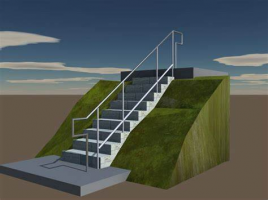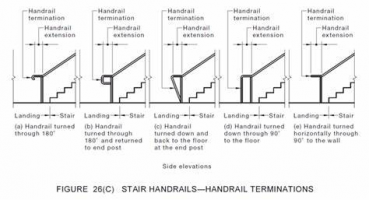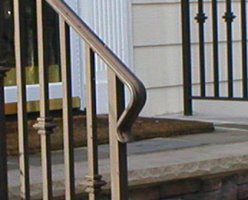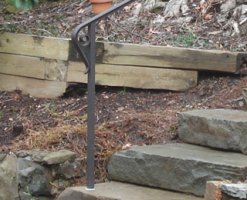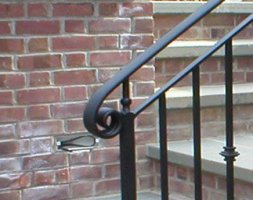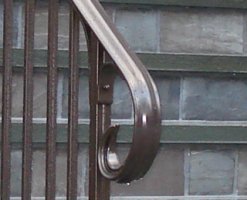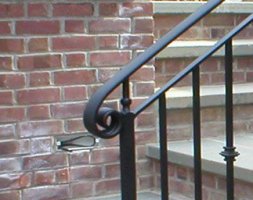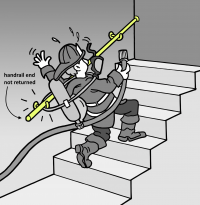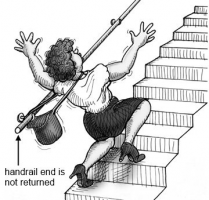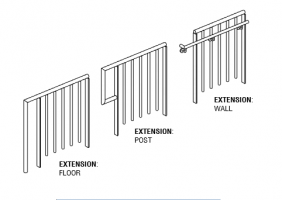jpowell
Bronze Member
Hi all. I've only posted a couple times, but lurk here from time to time. I am in Idaho, and we are on the 2018 IRC with a few revisions.
What in the world is a "safety terminal"? I'm sure everyone here is familiar with the code section. R311.7.8.4
Code says the handrail ends shall be returned or shall terminate in newel posts or safety terminals. I'm assuming it is supposed to be some sort of industry standard lingo since there is no definition in the code. I also assume it is supposed to be similar to terminating in a post because of the context.
I have tended to think of a safety terminal as a bulbous end cap that would help prevent a pocket from catching, or help stop a hand from sliding off the end during a slip.
Does anyone have advice, besides simply ignoring that portion of the code?
Thanks!
John in Idaho
What in the world is a "safety terminal"? I'm sure everyone here is familiar with the code section. R311.7.8.4
Code says the handrail ends shall be returned or shall terminate in newel posts or safety terminals. I'm assuming it is supposed to be some sort of industry standard lingo since there is no definition in the code. I also assume it is supposed to be similar to terminating in a post because of the context.
I have tended to think of a safety terminal as a bulbous end cap that would help prevent a pocket from catching, or help stop a hand from sliding off the end during a slip.
Does anyone have advice, besides simply ignoring that portion of the code?
Thanks!
John in Idaho

